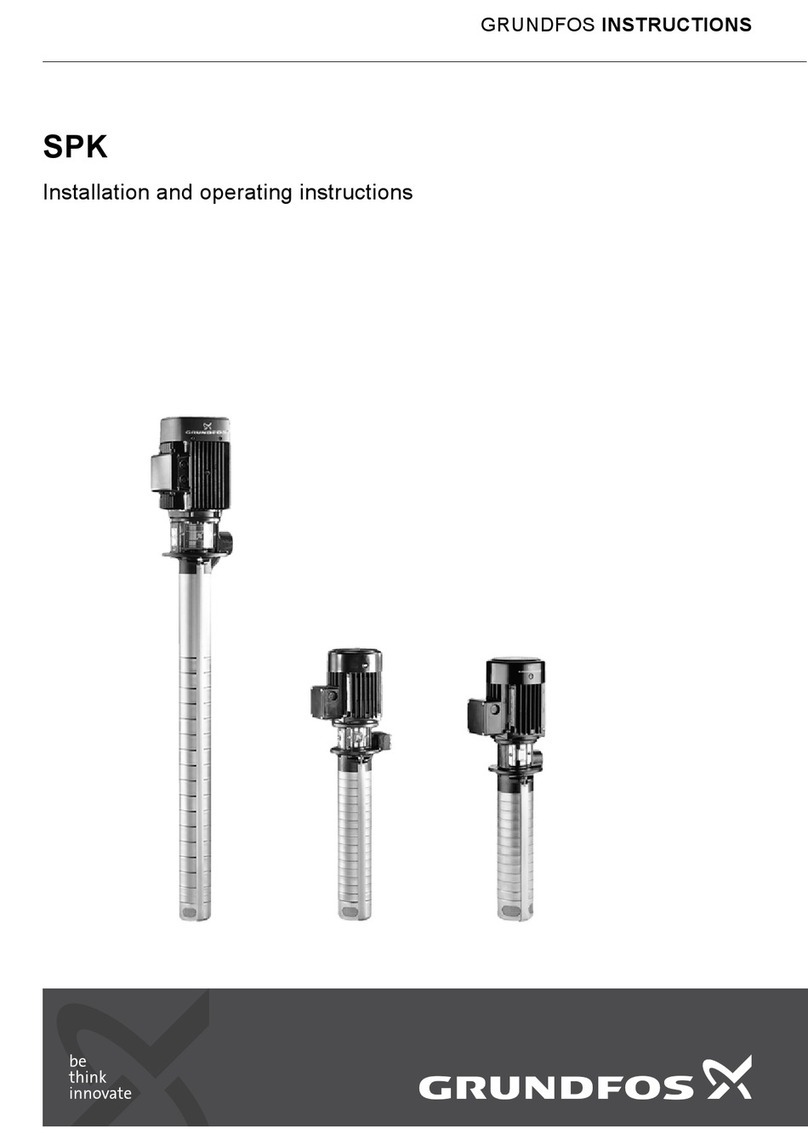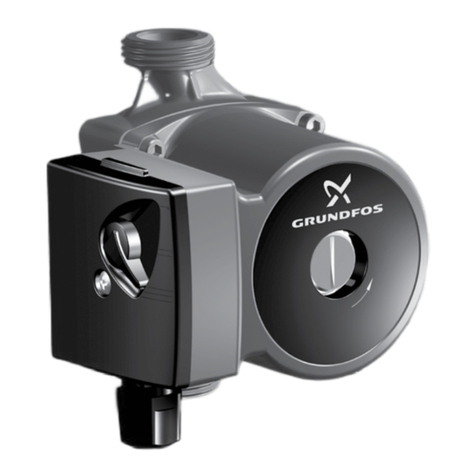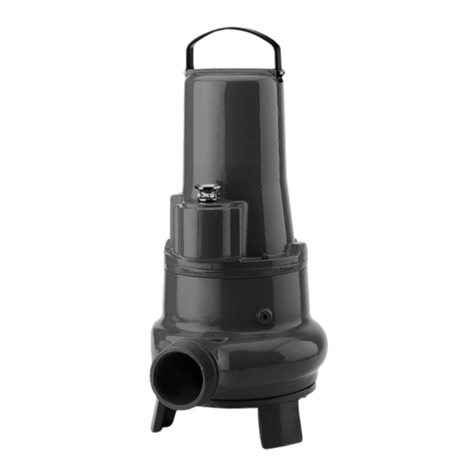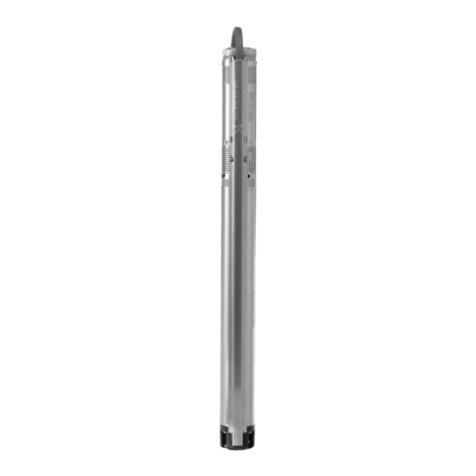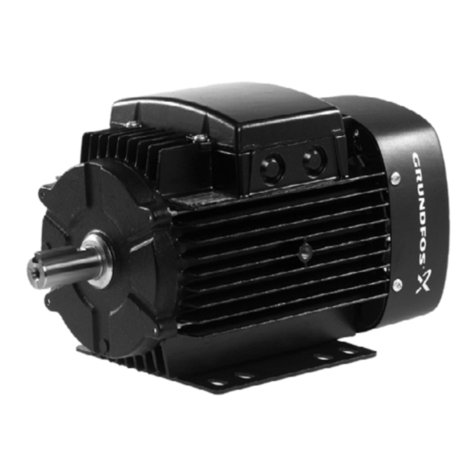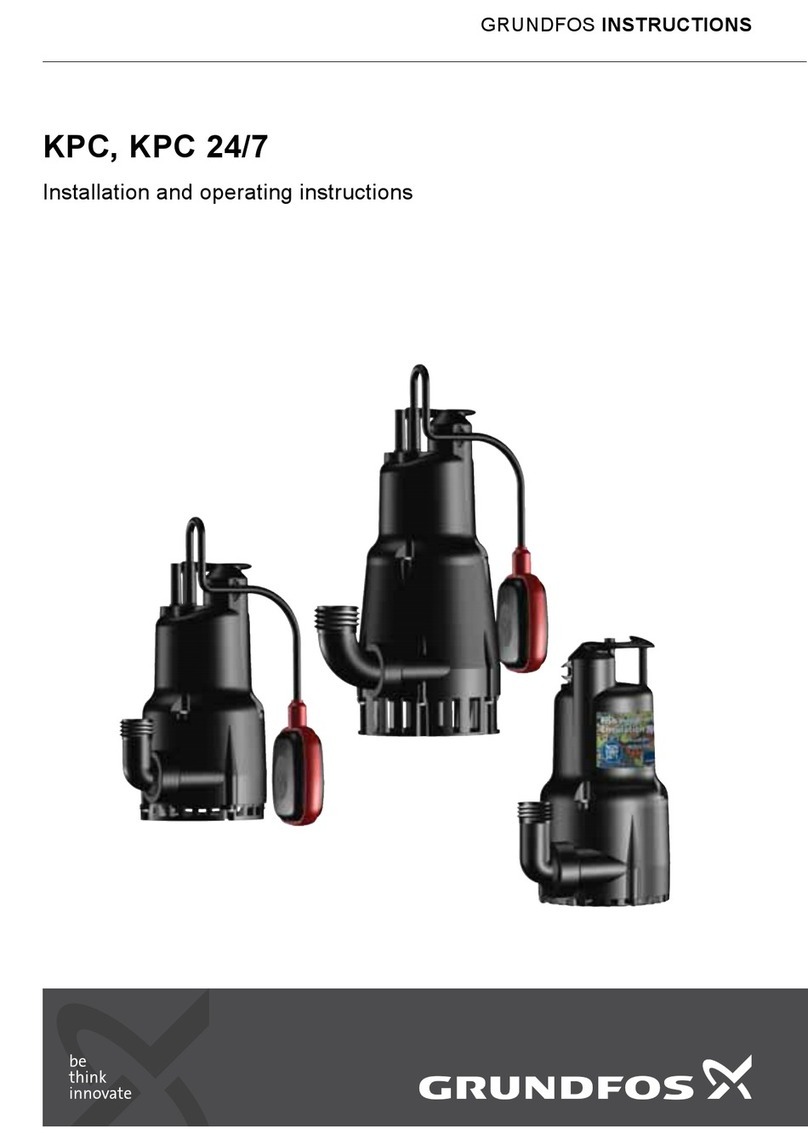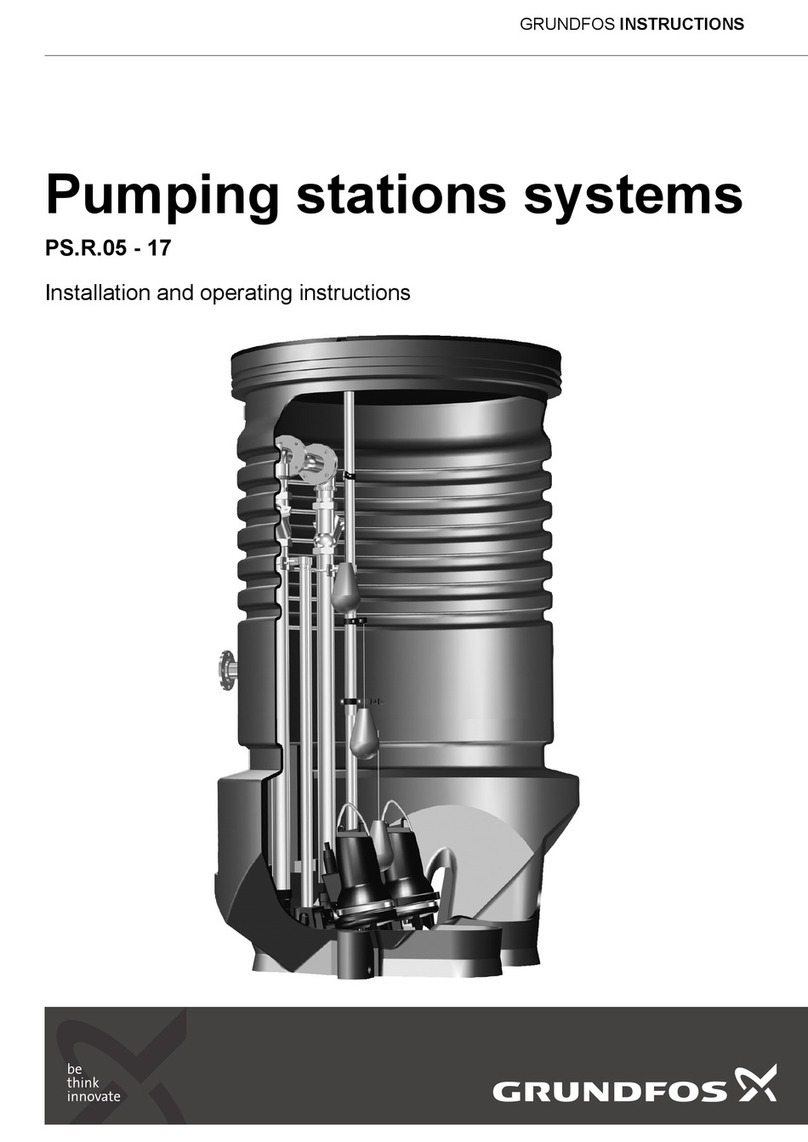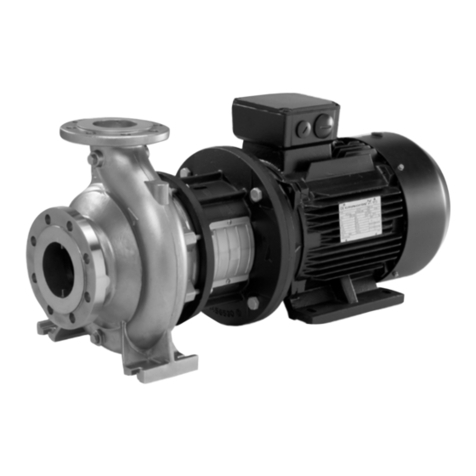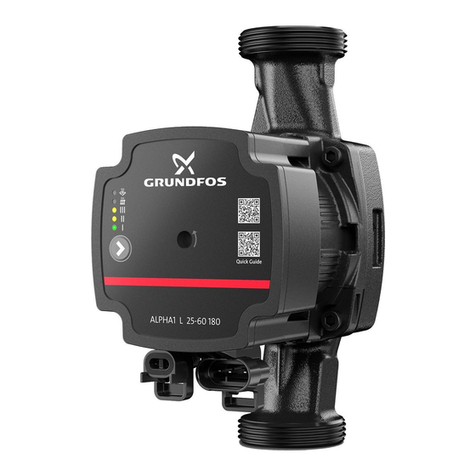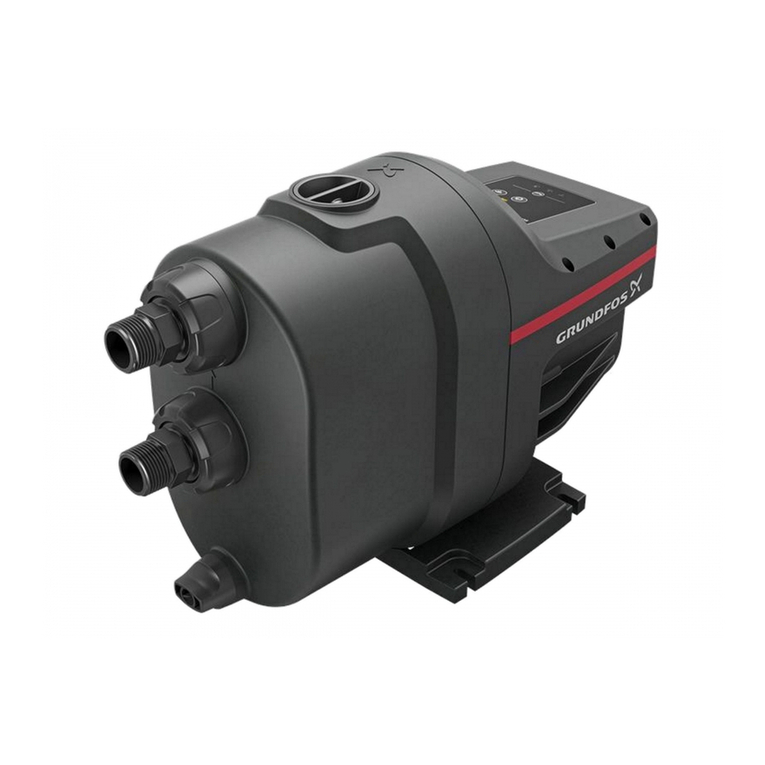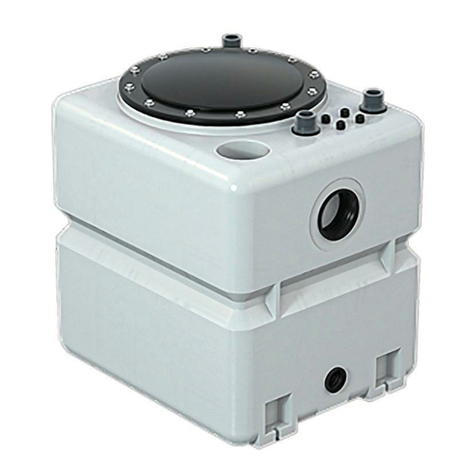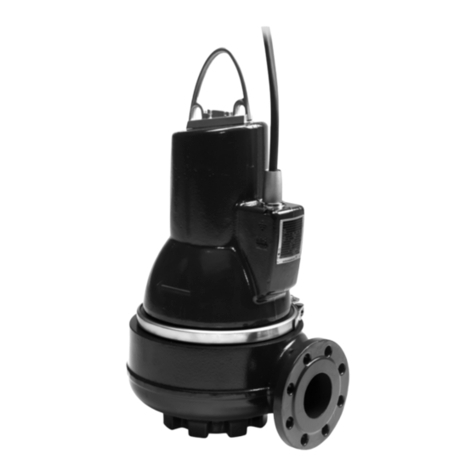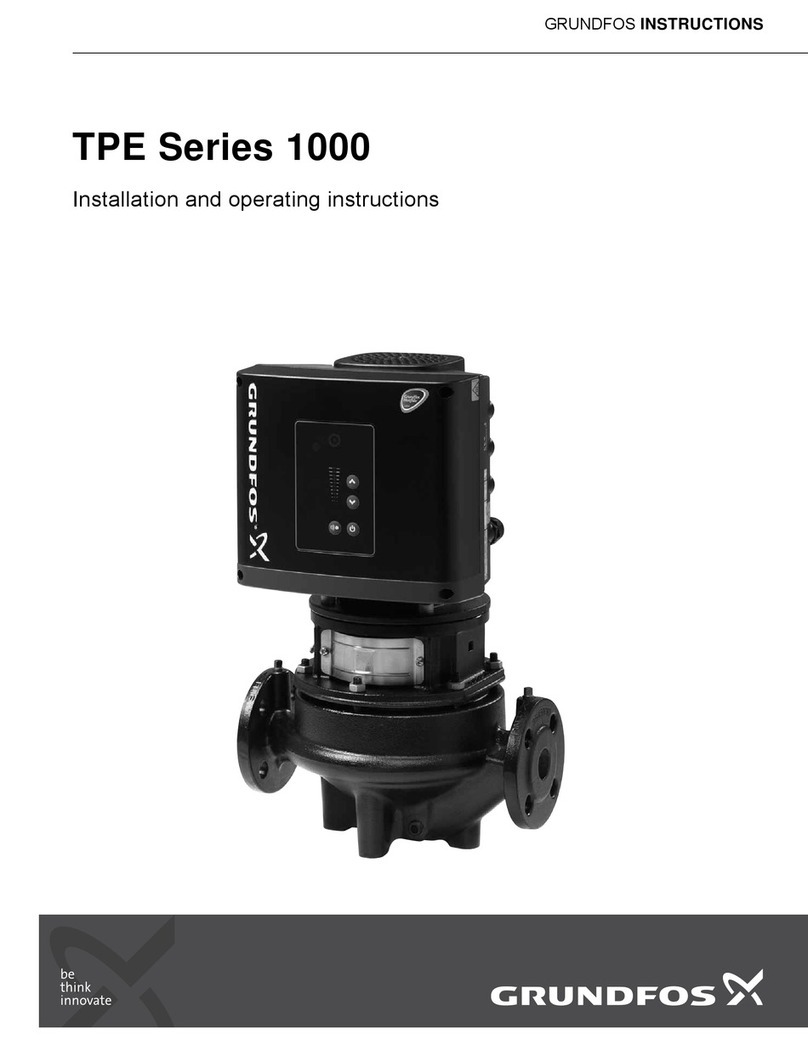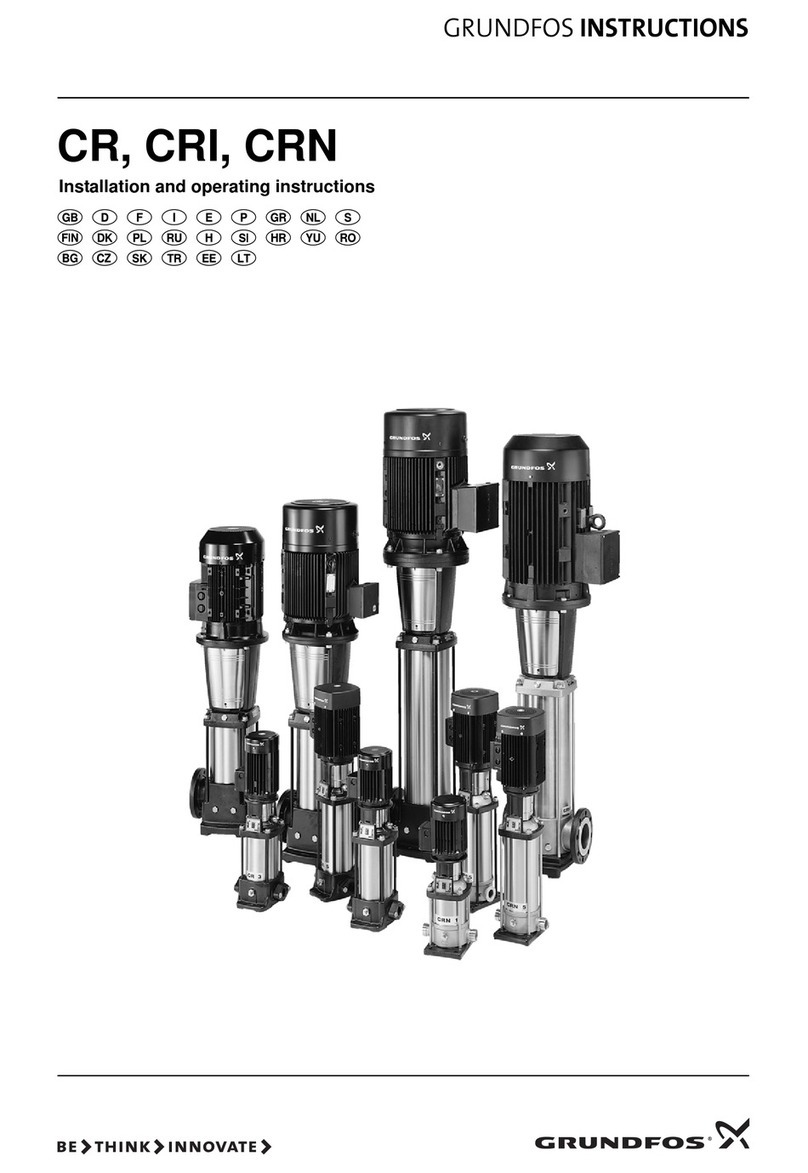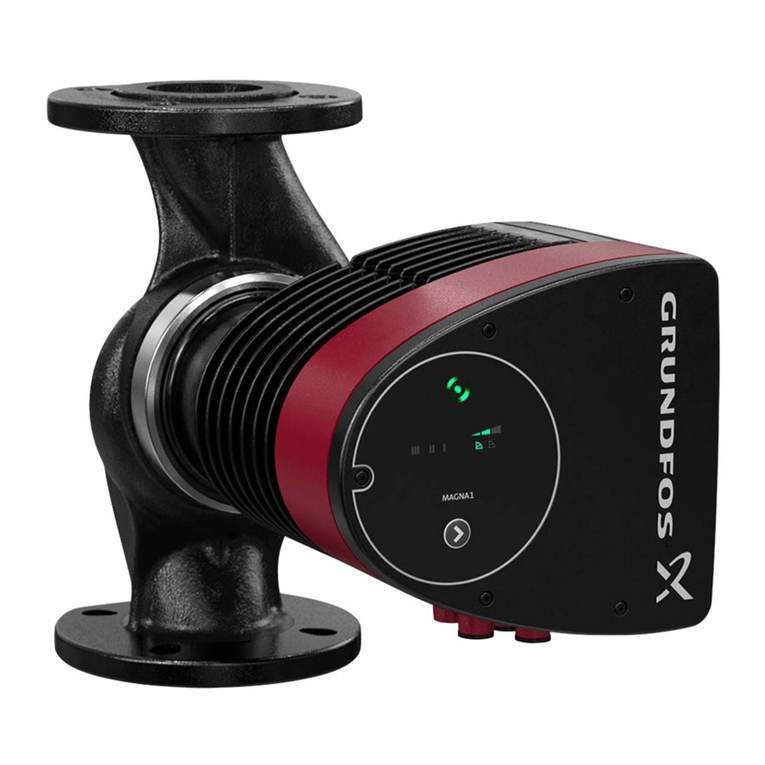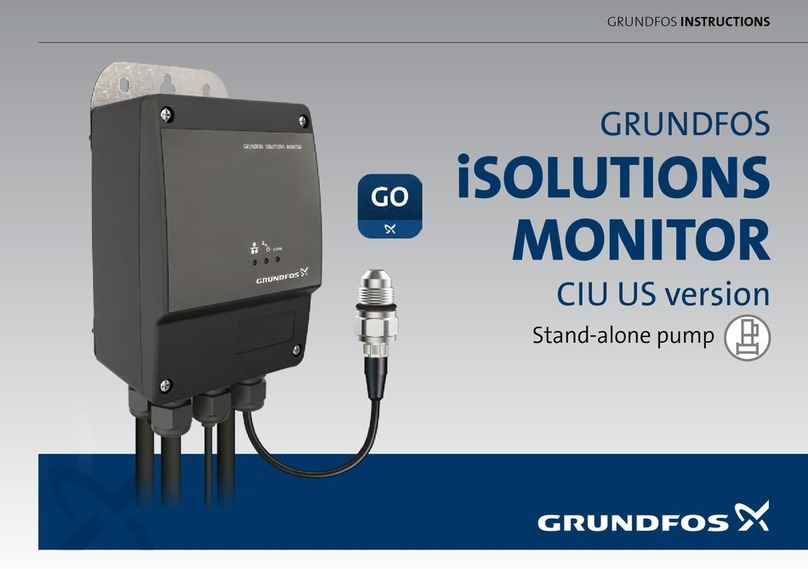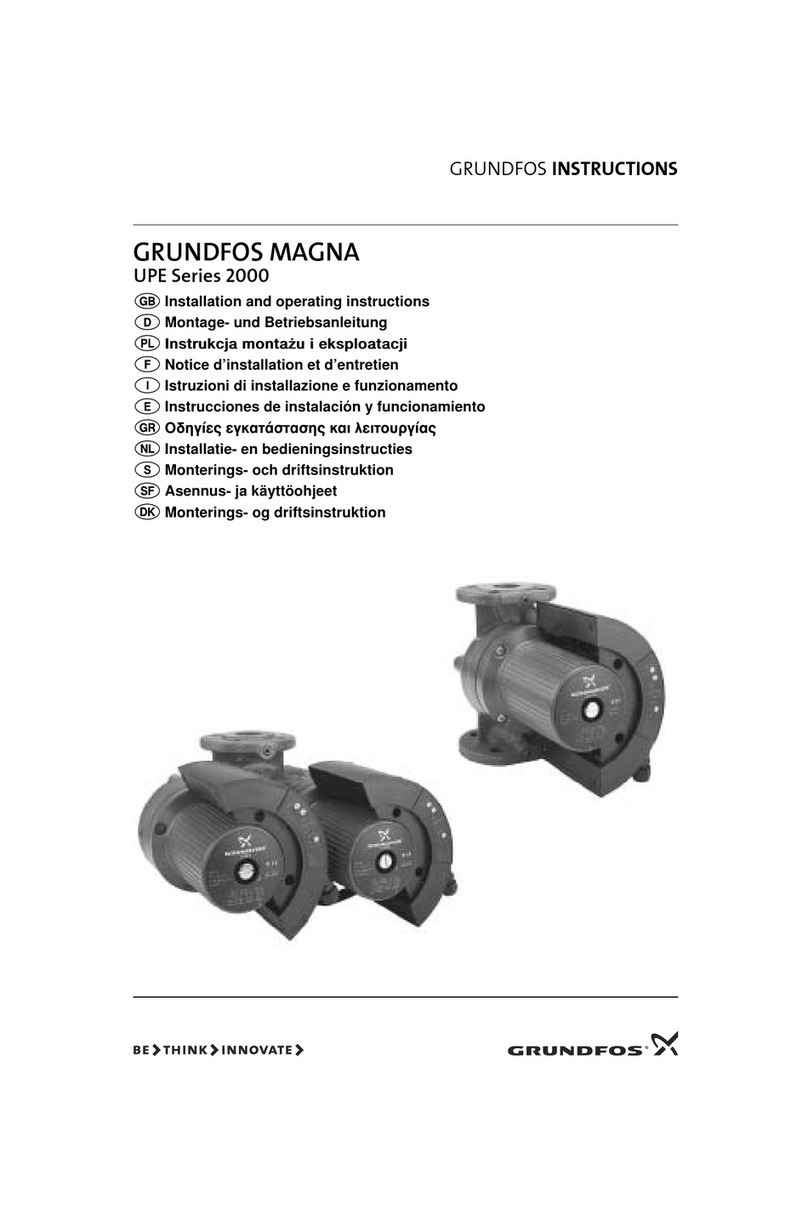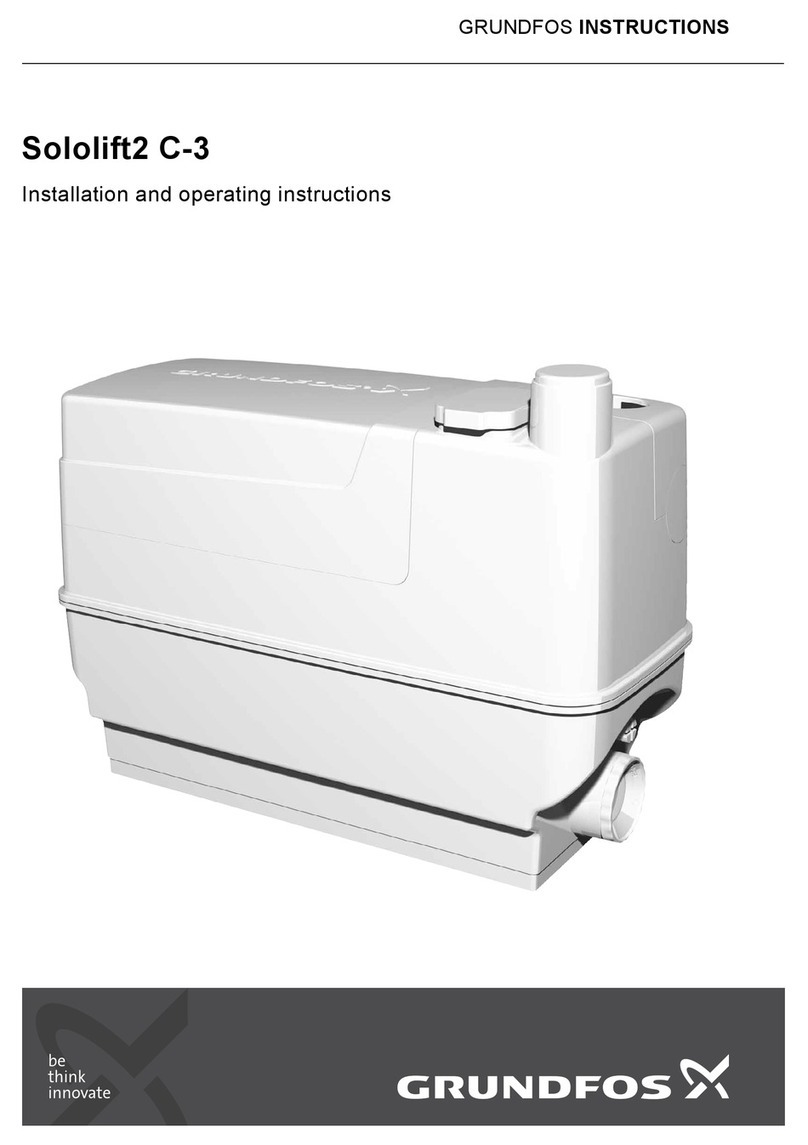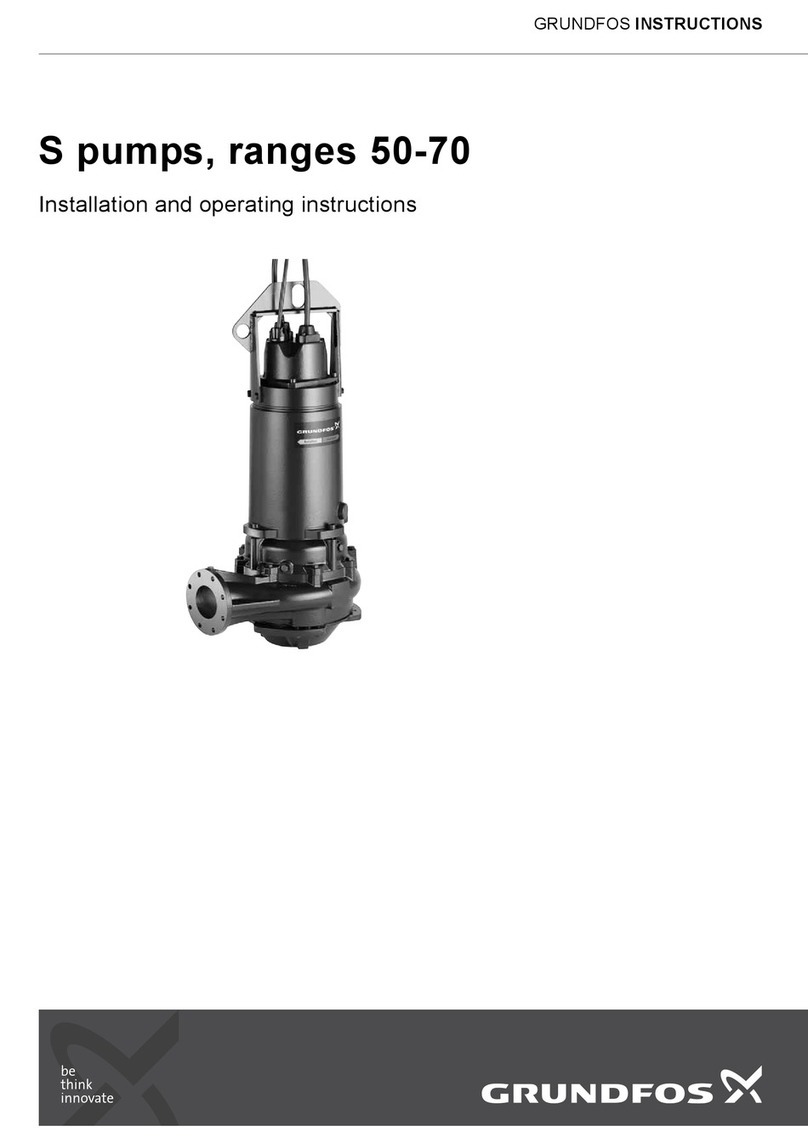
English (GB)
10
Permanent, horizontal installation in a pump room
Fasten the pump to the suction and discharge pipes by means of
flange connections. See fig. 8.
Fig. 8 Dry, horizontal installation with base stand and bracket
8.2 Permanent, vertical, submerged installation in a pit
Pumps for permanent, vertical installation in a pit can be installed
on a stationary auto coupling and operated completely or partially
submerged in the pumped liquid.
Proceed as follows:
1. Drill mounting holes for the guide-rail bracket on the inside of
the pit and fasten the guide-rail bracket provisionally with two
screws.
2. Place the auto-coupling base unit on the bottom of the pit.
Use a plumb line to establish the correct positioning. Fasten
the auto coupling with expansion bolts. If the bottom of the pit
is uneven, the auto-coupling base unit must be supported so
that it is level when being fastened.
3. Assemble the discharge pipe in accordance with the generally
accepted procedures and without exposing the pipe to
distortion or tension.
4. Place the guide rails on the auto-coupling base unit and adjust
the length of the rails accurately to the guide-rail bracket at
the top of the pit.
5. Unscrew the provisionally fastened guide-rail bracket. Insert
the expansion dowels into the holes. Fasten the guide-rail
bracket on the inside of the pit. Tighten the bolts in the
expansion dowels.
6. Clean out debris from the pit before lowering the pump into
the pit.
7. Fit the guide claw to the pump.
8. Slide the guide claw of the pump between the guide rails and
lower the pump into the pit by means of a chain secured to the
lifting bracket of the pump. When the pump reaches the
auto-coupling base unit, the pump will automatically connect
tightly.
9. Hang up the end of the chain on a suitable hook at the top of
the pit and in such a way that the chain cannot come into
contact with the pump housing.
10. Adjust the length of the motor cable by coiling it up on a relief
fitting to ensure that the cable is not damaged during
operation. Fasten the relief fitting to a suitable hook at the top
of the pit. Make sure that the cables are not sharply bent or
pinched.
11. Connect the motor cable and the control cable, if any.
8.2.1 Size of anchor bolts in bottom or plinth
8.3 Permanent, vertical/horizontal, dry installation in a
pump room
Pumps in dry installation are installed permanently in a pump
room.
The pump motor is enclosed in a watertight cooling jacket and will
not be damaged if the installation site is flooded with water.
Proceed as follows:
1. Mark and drill mounting holes in the concrete floor/concrete
foundation.
2. Fit the bracket or base stand to the pump.
3. Fasten the pump with expansion bolts.
4. Check that the pump is vertical/horizontal.
In order to facilitate service on the pump, we recommend that you
use isolating valves on either side of the pump.
5. Fit the suction and discharge pipes and isolating valves, if
used, and ensure that the pump is not stressed by the
pipework.
6. Adjust the length of the motor cable by coiling it up on a relief
fitting to ensure that the cable is not damaged during
operation. Fasten the relief fitting to a suitable hook. Make
sure that the cables are not sharply bent or pinched.
7. Connect the motor cable and the control cable, if any.
Installation type H
TM05 2539 0212
Make sure that the pipework is installed without
the use of undue force. No loads from the
pipework weight must be carried by the pump.
We recommend that you use loose flanges to
ease the installation and to avoid pipe tension at
the flanges.
Do not use elastic elements or bellows in the
pipework; these elements should never be used
as a means to align the pipework.
In some installations, a plinth is required beneath
the auto coupling to ensure correct installation of
the pump. This should be considered during the
design of the installation.
The guide rails must not have any axial play as
this would cause noise during pump operation.
The free end of the cable must not be submerged,
as water may penetrate through the cable into the
motor.
Auto-coupling
base unit Anchor bolts
Pull-out strength,
single bolt
[kN]
DN 80/100 4 x M16 10.0 kN
DN 100 4 x M16 10.0 kN
DN 150 4 x M16 10.0 kN
DN 200 4 x M24 10.0 kN
DN 250 4 x M24 10.0 kN
DN 300 4 x M24 12.0 kN
The strengths given above are without safety
factor. Required safety factor may depend on the
materials and the method used for anchoring.
